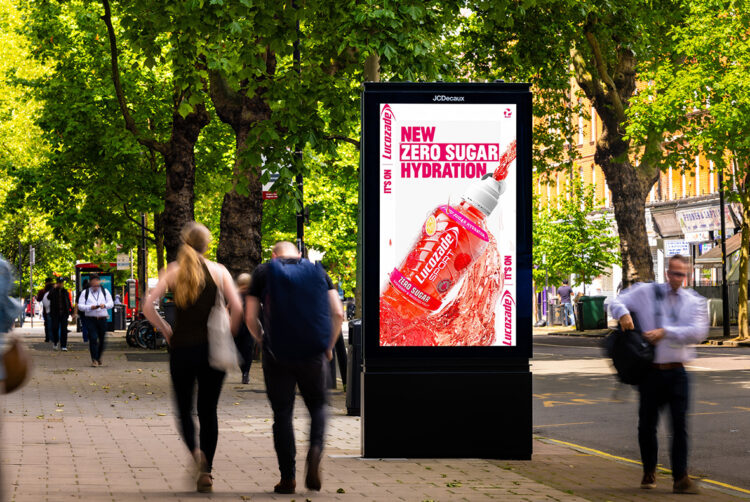Partner Content
Low media quality can be synonymous with chaotic, inappropriate or MFA content that results in poor user experience and a low-value investment. But pDOOH could be the antidote.
Media quality is an ever-expanding topic that can include brand safety, brand suitability, environment, viewability, user experience and fraud.
In traditional online advertising, low quality can be synonymous with chaotic, inappropriate or made-for-advertising content that results in poor user experience and a low-value investment.
Thankfully, programmatic digital OOH (pDOOH) is not plagued by these issues — in many cases, pDOOH can be seen as the antidote. But that doesn’t mean all pDOOH advertising is of equal quality and value.
What impacts quality in pDOOH?
In pDOOH, quality can be addressed through three angles: the environment and the screen on which the ad will be played, the audience-targeting used to identify the ad placement and the creative itself.
The environment in which an ad is displayed and the screen on which it is shown are the primary factors that will influence consumers’ perception of, and reception to, the brand’s messaging. However, showing even the best creative in a low-end environment or on a poor-quality screen will undermine the message.
When assessing the quality of pDOOH inventory, advertisers and agencies need to understand the nature of the environment (rail, roadside, retail, airport etc), the positioning and resolution of the screen itself, and the style or functionality of the infrastructure around the screen.
Our screens are designed and made based on four criteria: quality, style, functionality and environmental performance. This means adhering to eco-friendly design, strength and durability criteria, low energy consumption, air-pollution monitoring and the use of recyclable materials.
We anticipate constantly changing needs and innovate to provide services to the public to enhance the passenger experience and contribute to the evolution of the smart city. We also conduct regular, proactive maintenance of all our screens to ensure they are always in prime condition.
Leveraging programmatic capabilities from premium media owners enables buyers to benefit from maximum reach. It takes advantage of all relevant screens while mitigating against the risk of your ads showing on low-quality screens with poor resolution in locations where they may not be seen by the right audience or, if they are seen, go unnoticed due to the nature of the location.
How does audience-targeting impact quality?
Tactically, running ads on screens where your target audience is most likely to be increases the overall quality of your pDOOH campaign.
This is particularly true if, for example, your audience moves around a lot or if your messaging benefits from real-time updates. The challenge facing pDOOH buyers is that the accuracy, and therefore the quality, of audience data varies dramatically.
When evaluating different sources of audience data, it is important to consider:
- How is the data collected?
- How frequently is the data updated?
- Can the data be easily integrated into your chosen demand-side platform (DSP)?
- Are you able to overlay additional data to create bespoke audience segments?
- Can you accurately measure the impact of adding the data source to your targeting?
JCDecaux has partnered multiple providers to give you the most accurate, up-to-date audience data upon which to start planning your campaigns. These include YouGov, Route, CACI, BT, Experian, Dunnhumby, Adsquare and many more.
Furthermore, through our supply-side platform Viooh, we offer seamless integrations with all leading DSPs, enabling you to combine our audience data with that provided by your DSP partner, all in a privacy-safe way.
Sustainability in pDOOH
Sustainability has been at the heart of our business ever since our founder Jean-Claude Decaux came up with the idea of providing bus shelters free of charge to councils, paid for by the advertising on them. Today, we continue to develop innovative solutions that help cities and our partners prosper and grow, staying true to the vision of our founder to integrate sustainability into the fabric of our products and our services.
Quantifying the environmental impact of digital advertising is a complex challenge, as there are numerous hidden factors to consider. To fully grasp advertising emissions, advertisers must analyse the entire lifecycle — from production to distribution — across the whole media mix.
However, pDOOH buyers can take actionable steps to reduce their carbon footprint by, for example, optimising their supply chain to prioritise media owners and data providers committed to using renewable and low-emission energy sources.
Also, when planning omnichannel campaigns, it is important to factor in the fact that pDOOH ad impressions reach more than one individual. Therefore carbon emissions per impression are not comparable to, for example, mobile, where a single person views a single impression.
Why quality matters — the bigger picture
Quality media is a differentiator for premium publishers in a market that is becoming increasingly commoditised and fragmented. Benchmark criteria of viewability, brand safety and sustainability will get us so far, but by going above and beyond those signals and achieving quality standards that stand apart from a peer group, media owners can better serve advertisers by providing premium environments that align with brand messaging efforts.
Programmatic DOOH offers brands the optimal blend of premium media placements, brand safety, audience-targeting and thus extremely high overall quality and return on media investment.
Read part two:
A rallying cry for more creativity in programmatic DOOH
Read part three:
Targeting and measurement improvements put pDOOH on par with other digital channels
 Mark Halliday is director of programmatic at JCDecaux UK
Mark Halliday is director of programmatic at JCDecaux UK
Adwanted UK is the trusted delivery partner for three essential services which deliver accountability, standardisation, and audience data for the out-of-home industry.
Playout is Outsmart’s new system to centralise and standardise playout reporting data across all outdoor media owners in the UK.
SPACE is the industry’s comprehensive inventory database delivered through a collaboration between IPAO and Outsmart.
The RouteAPI is a SaaS solution which delivers the ooh industry’s audience data quickly and simply into clients’ systems.
Contact us for more information on SPACE, J-ET, Audiotrack or our data engines.






 Mark Halliday is director of programmatic at JCDecaux UK
Mark Halliday is director of programmatic at JCDecaux UK